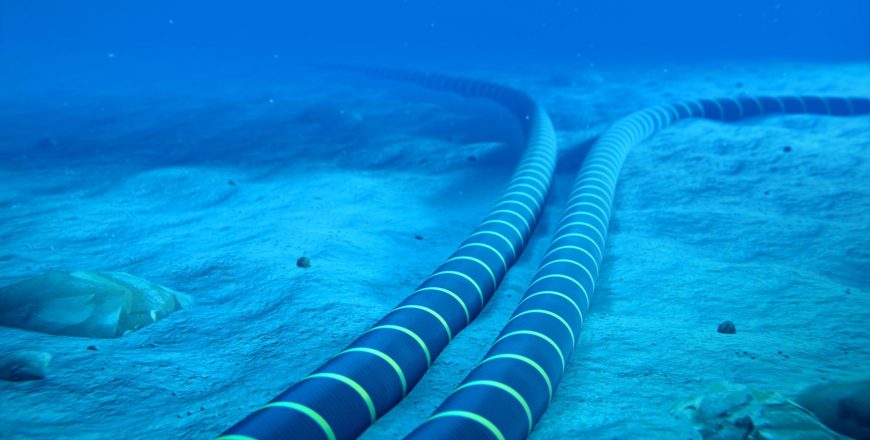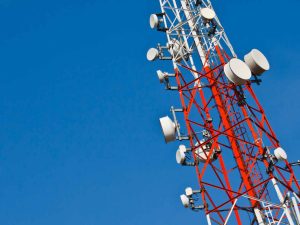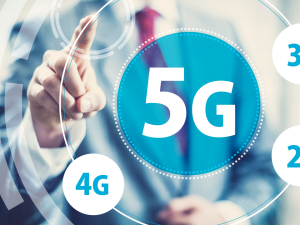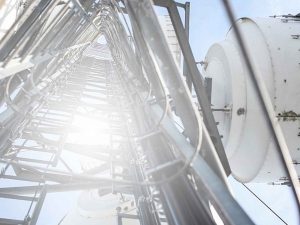Submarine Cable Systems with IPLC and IP Transit Services

Course Overview
This course covers both technical and commercial aspects of the submarine cable systems in terms of its products, traffic, and costing trends. It is designed to help bridge the knowledge gaps that may exist in telecom and non-telecom professionals.
It is targeted to telecom professionals working on telecom systems and interfaces like SDH, STM-x, Gigabit Ethernet, OTN/OTU, etc., and non-telecom professionals such as financial experts, marketing executives, product costing, and product development professionals.
Target Audience
- Telecom Engineers
- Strategic Planners
- Costing Professionals
- Product Development Experts
- Financial Experts, etc.
Duration & Training Format
- Classroom: 3 days
- LIVE Virtual*: 21 hours
- A minimum of 6 or more participants are required for a company-based LIVE Virtual course to commence
- LIVE Virtual courses can be conducted for 5 hours or 7 hours daily. Please note that the number of training days will be extended if you opt for 5 hours daily.
Upcoming Course Dates
Course Objectives
After attending this training, participants will be able to:
- Describe the international communication, submarine cable, operator’s participation mechanism in a traditional carrier consortium
- Describe the network architecture of submarine cable, end terminals and different types of interfaces
- Describe the telecom product development life cycle
- Prepare the business case for a project and by reverse engineering of the model which in turn will help to adjust the product costing and revenue streams
- Understand the regional and global traffic trends and the player’s role in submarine cable segment
Key Benefits
Participants will have a full understanding of the international requirements, development, and operation of submarine cables, along with interfaces details, to develop the products in data and voice for marketing. They will also understand the traffic and costing models and trends – both regionally and globally.
Course Outline
- International Telecom Network Requirements
- Overview of different Transmission Media
- Submarine Optical Fiber Cables
- Submarine Cable Network Types
- Private
- Hybrid
- Traditional Carrier Consortium
- Open System and Closed System
- Overview of Submarine Cable System
- High Level Overview of Submarine Cable System
- Components
- Multiplexing and Capacity Building
- Optical Fiber Communication System
- Optical Fiber Communication System Introduction
- Basic Terms – EM Wave, Bandwidth, dB, Propagation, Spectrum, Trans Media Types
- Advantages and Disadvantages of OFS
- Laws of Light Propagation
- Fiber Construction and Geometry
- Light Propagation in Fiber Optic Principle
- Types of Fiber (SM and MM)
- Different Types and Characteristics of Single Mode Fibers
- Coherent Fiber (D- and D+)
- Fiber Standards
- Fiber Material
- Transmission Nature of Glass
- Attenuation (Types and Remedial Measures)
- Dispersion (Types and Remedial Measures)
- Power Budget
- Link Budget
- Amplifier in the Link
- Equalizer in Link
- Components of OFS
- Optical Sources
- Optical Detectors
- Optical Fiber Cable Technology
- Cable Construction
- Terrestrial Optical Fiber Cable
- Aerial Optical Fiber Cable
- Submarine Optical Fiber Cable
- Submarine Cable Manufacturing
- Subsea Cable Load-Out to Installation Ship
- Selection of Right Cable vs Depth
- Installation of Cable for Different Types of Seabed
- Sea Plow
- Survey Vessel
- Synchronous Digital Hierarchy (SDH)
- What is SDH?
- Advantages and Disadvantages
- SDH Frame
- Capacities and Interfaces
- Significance of Overheads and Pointers
- Add/Drop Multiplexer (ADM)
- SDH Network
- WDM/CWDM/DWDM
- Why WDM? (Benefits and Complexities)
- Passive Optical Components
- Optical Filters
- Fiber Types for DWDM
- Lasers and Spectral Width
- Optical Add/Drop Multiplexer (OADM)
- Reconfigurable OADM (ROADM)
- Optical Line Amplifier (OLA)
- Incorporating the DWDM in Submarine Cable
- Optical Transport Network (OTN)
- Why OTN?
- OTN Hierarchy
- OTU, ODU, OPU and Client Signal
- Forward Error Correction (FEC) and Coding Gain
- Metro Ethernet
- Ethernet and Interfaces
- 10G LAN PHY
- 10G WAN PHY
- Metro Ethernet Basics
- Benefits of Metro Ethernet
- Metro Ethernet Services
- Network Architecture of Submarine Cable
- Dry and Wet Plant
- Submarine Cable Optical Fiber Cables
- Submarine Cable Trunk and Branch
- End Terminals
- Ocean Grounding
- Landing Stations
- Submarine Line Terminal Equipment (SLTE)
- Multiplexing Equipment
- Power Feed
- O&M
- Repeaters
- Branching Unit
- Submarine Cable Endeavors
- Conception, Planning, Licenses, Permits, Right-of-Way (ROW), Permissions, Third-Party Landing Station/Infrastructure
- Marine Surveys
- Routing, Accessing and Offering
- Landing Parties
- Contracting
- Execution
- Operation
- End of Life
- Minimum Investment/Assignable Units (MIU/MAU)
- Operation and Maintenance
- Operation and Maintenance of Subsea Cable
- Splicing of Fiber
- Jointing of Subsea Cable
- Cable Damage, Fault Localization and Repair Procedure
- Adhoc and Contracted Repair Options and Comparison
- Business Case for Submarine Cable
- Revenues
- IRR
- Payback Period
- Reverse Engineering of Business Case for Competitive Tariff/Revenue Adjustments
- Tariff Selection and Global Market
- Global and Regional Traffic Trends for Telecom Services
- Bandwidth Market, Players and Competition Trends
- Data and Voice Products for Submarine Cable
- Overview of Submarine Cable Products
- STM-X
- Direct Wavelength Access
- OTU
- 10GE LAN PHY
- Interlinking
- IPLC
- IP Transit
- Telecom Product Development Life Cycle
- IPLC and IP Transit Product/Service
- Sales Strategy
- Wholesale IP Transit Service vs Retail ISP Service
- Network and Architecture for IP Transit Service
- Rolling Out a New Network for Wholesale IP Transit
- Product Development Life Cycle
- Competition and Trends
- Pricing Models and Service Level Agreement
- Operational and Maintenance for IPLC and IP Transit Services
- Service Network Design and Implementation, Service Testing and Handover
- Post Sales Customer Service (Customer Service Support for IPLC and IP Transit)
- Network Operations Center’s Role and its Service Level
- Maintenance and Troubleshooting Approaches
- Pricing Models
- Leasing Approaches
- Leasing Cores
- Leasing BW
- Leasing Lambda
- Product Quality of Service (QoS)
- Service Level Agreements
- Case Studies
Note: A Certificate of Completion will only be issued upon achieving at least 75% attendance for the course.
Pre-requisites
Testimonials




